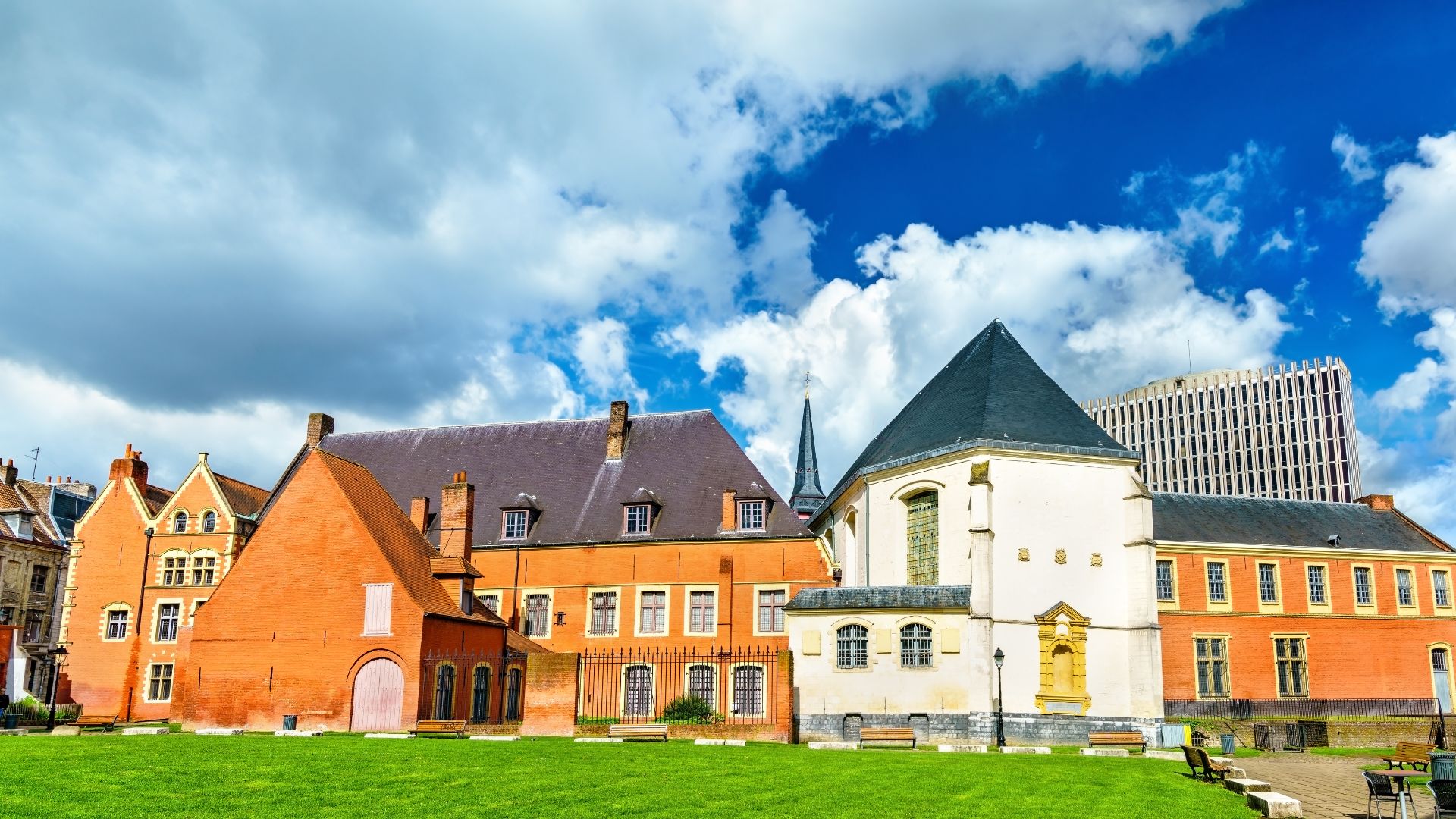
Are you an architecture student in Lille or are you just interested? Here is a little guide for you on architecture in Lille:
The architectural styles you can find in Lille
Lille is a city that reveals an incredible architectural diversity, reflecting its history and evolution through the centuries. As you walk through its streets, you will discover a true mosaic of architectural styles, testifying to the exceptional heritage that surrounds you. Let’s discover the architectural treasures and other historic buildings of the “capital of Flanders”:
Gothic architecture – Hospice Comtesse
Lille has preserved some examples of gothic architecture such as the Hospice Comtesse, which now houses a museum of art and history. It is characterized by magnificent crisscross vaults, rich decorative elements such as gargoyles or flying buttresses and a strong religious dimension. Visiting a Gothic building like the Hospice Comtesse is to immerse yourself in the history, culture and art of medieval Europe and appreciate the significant progress of its architecture. If you are enrolled at the Catholic University of Lille, you also have the chance to study in a beautiful neo-Gothic style building, movement inspired by the Gothic!
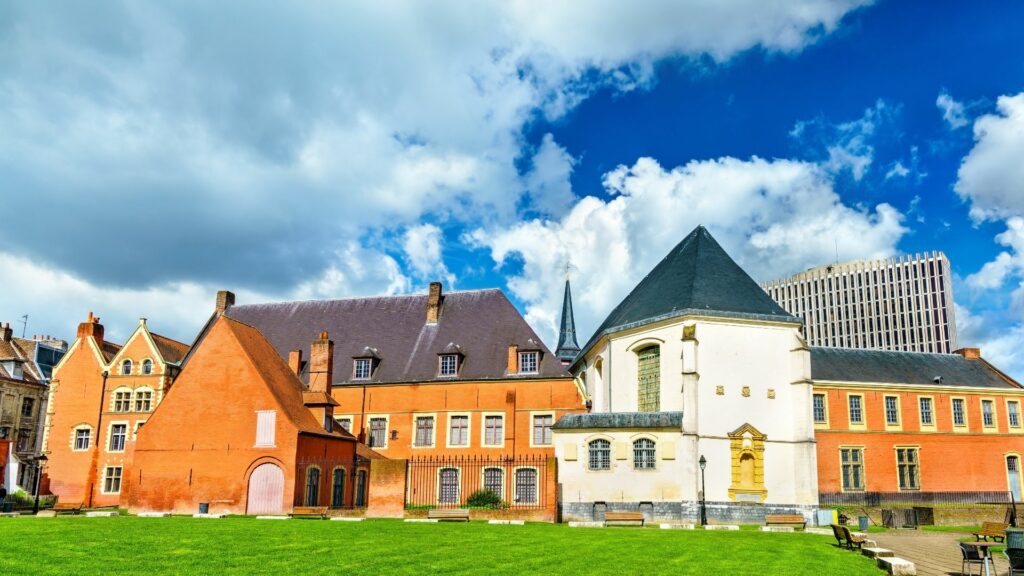
Flemish architecture – The Old Stock Exchange
Lille, having historically been part of the county of Flanders, has forged close economic and cultural ties as a commercial hub and regional capital, This is a good way to promote the spread of Flemish architecture in its urban landscape.
Today, this architectural influence is palpable through emblematic buildings such as the Old Stock Exchange and the house of Gilles de la Boë, as well as in the Flemish houses of Old Lille. Recognizable by its characteristic use of red brick, sloping roofs, stepped gables, and detailed sculptural ornaments such as cartridges, With its fruits and garlands, the Flemish architecture in Lille offers a real immersion in the historical heritage of the city. So, look up if you visit the Old Stock Exchange and admire the details of the facades and courtyard.
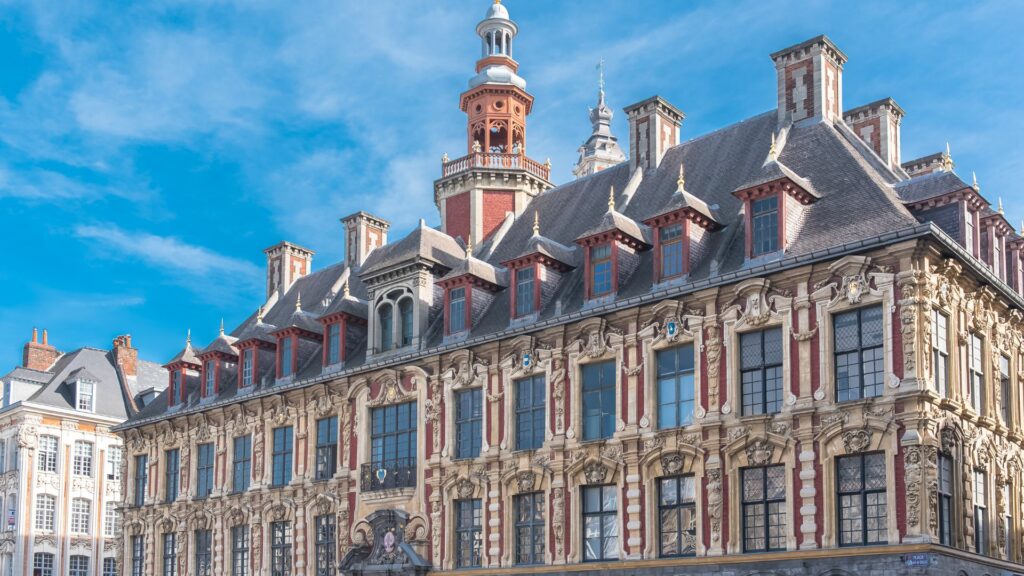
Neoclassical architecture – Lille Opera
In Lille, the neoclassical style, heir of Greece and Rome, left its mark. Many emblematic buildings of the 19th century, such as the Opera, the Sevastopol Theatre, the Palace of Fine Arts and the prefecture, bear witness to this.
Whether strolling on the square of the Theatre or during a performance, the imposing colonnaded façade and the triangular pediment of the Opera evoke an irresistible atmosphere of ancient temples. Each statue has a powerful symbolism: from Apollo, the god of arts, and his muses adorning the pediment, to Melpomene, muse of tragedy, and Euterpe, muse of music, which adorn the facade.
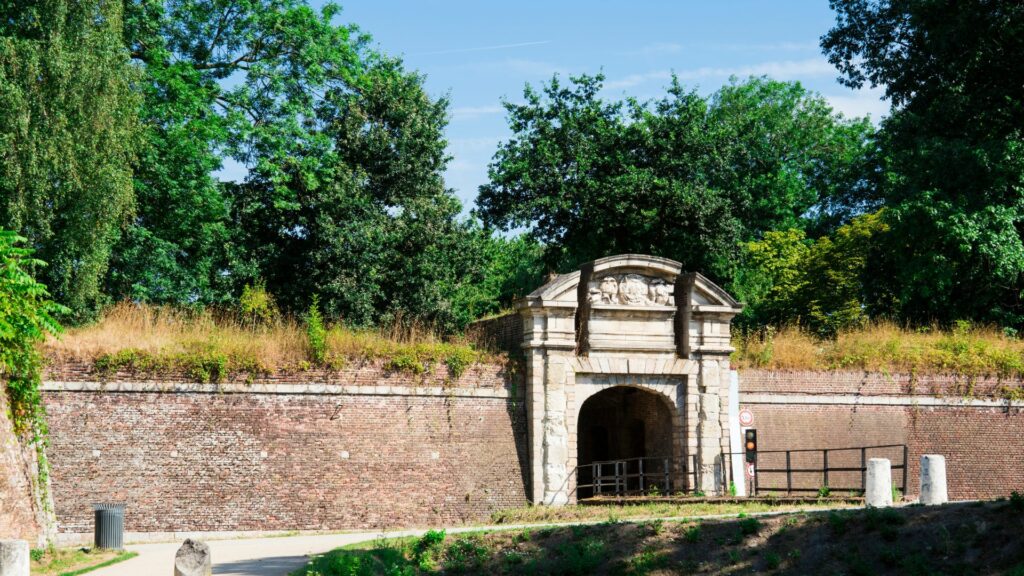
Military Architecture – Citadel
The “Queen of the Citadel” is an impressive example of military architecture. Built in the 17th century on the orders of Louis XIV, it testifies to the strategic importance of the city in the defense of French territory. With its high stone walls pierced openings for the cannons, defensive bastions and ditches, the fortified offers testifies to this historical role. Although now dedicated to relaxation and culture, the Citadel recalls the original intention of its construction, while its classic military architecture fascinates visitors. Other remnants of the city’s military past, such as the imposing Porte de Paris, also enrich Lille’s historical heritage.”
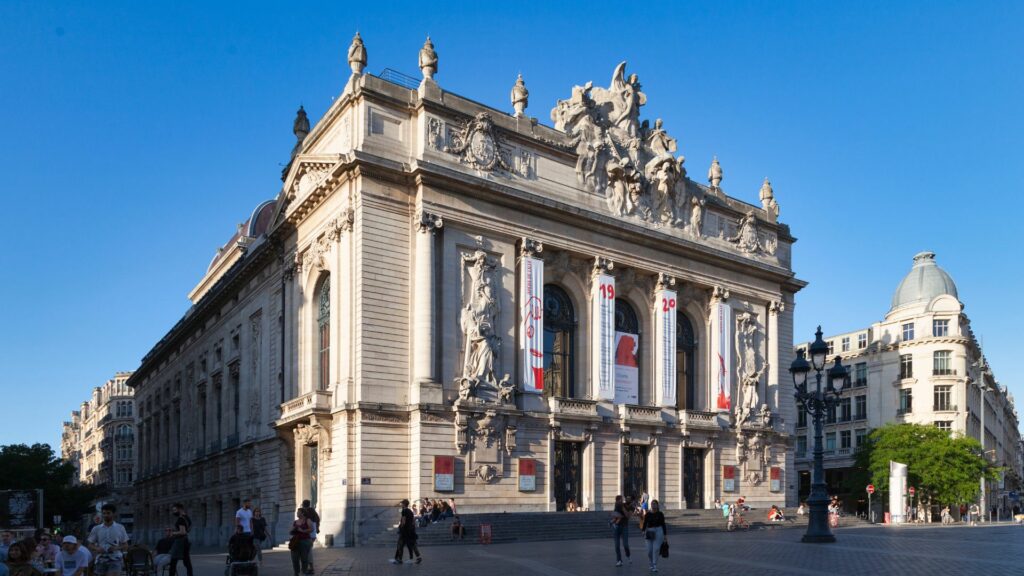
Industrial Architecture – Gare Saint Sauveur
The industrial past of Lille is seen in its streets, where the old industrial buildings restored testify to the economic importance and manufacturing heritage of the city. Characterized the use of robust materials, by large surfaces and by many sources of natural light these structures offer many possibilities for reconversions that greatly benefit development projects urban.
This is evidenced by the Gare Saint-Sauveur, a former freight station, which now offers cultural events, leisure areas and a restaurant bar. This revitalization of the neighborhoods is part of a process of harmonious integration of the past and the industrial architecture of the city in its contemporary development.
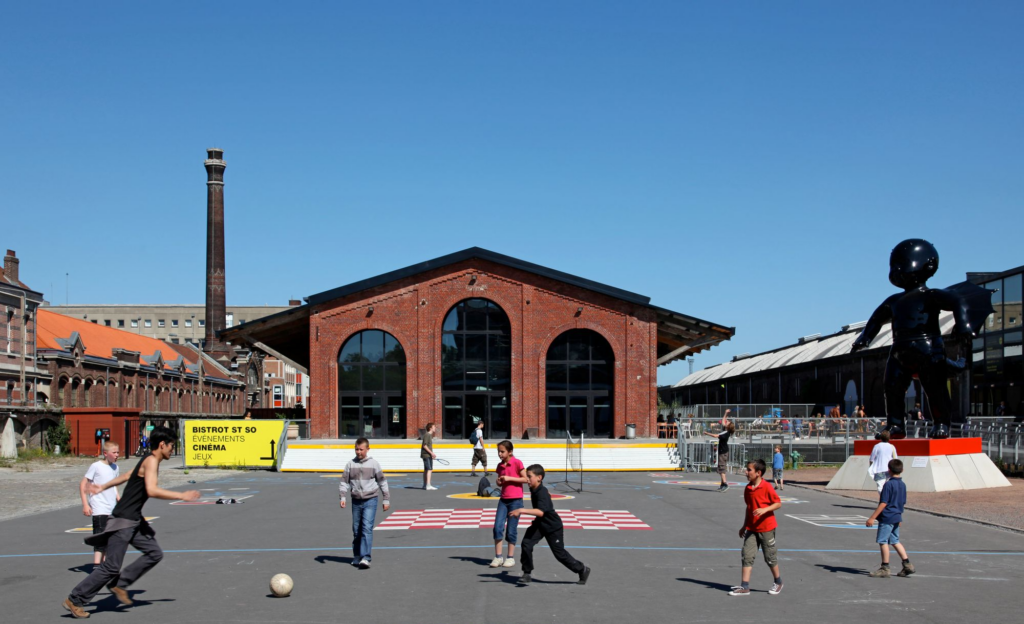
Ysevauchez, CC BY-SA 4.0 https://creativecommons.org/licenses/by-sa/4.0, via Wikimedia Commons
Contemporary Architecture – Euralille
The architecture of several iconic buildings also attests to the modernity of Lille. From the Euralille business district (which you probably know for its shopping center), to the Grand Palais, passing by the LaM museum, The city is full of buildings that demonstrate its economic vitality and propensity for innovation.
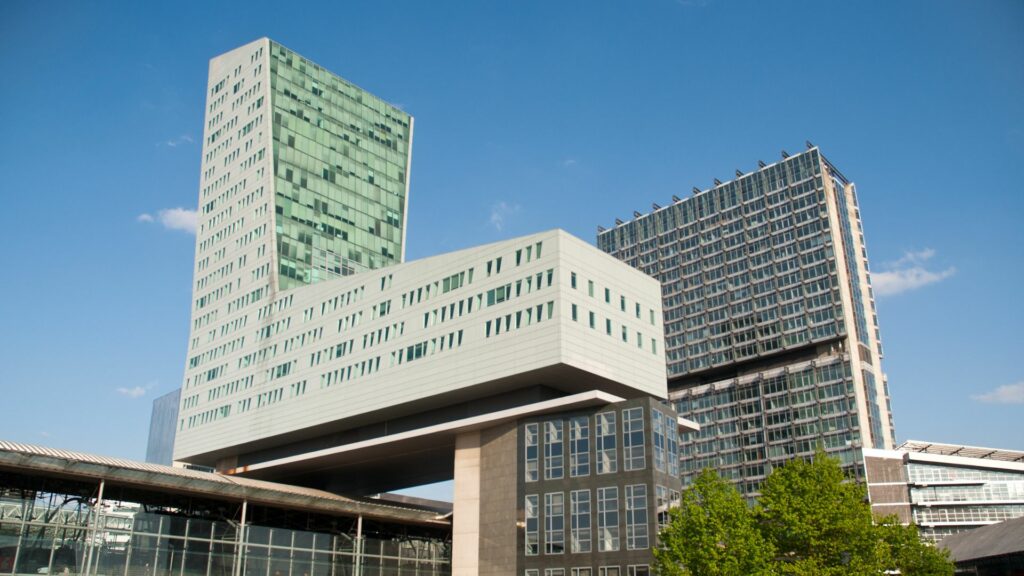
You can find other architectural movements in Lille, it’s up to you to discover them! Every walk in the streets of the capital of Flanders is an opportunity to discover hidden architectural jewels!
Where to learn more about architecture in Lille?
- WAAO – Centre for Architecture and Town Planning (former House of Architecture and City)
Its mission is to promote and raise awareness of contemporary architecture and urban planning. The WAAO offers various activities, such as exhibitions, conferences, debates, educational workshops and guided tours, to help visitors better understand the issues related to architecture and urban planning.
- Guided tours of the Lille Tourist Office
New tours are set up throughout the seasons and can be booked on their website.
- The Heritage Days
These days, which take place every year in September, offer the opportunity to visit many historic and contemporary buildings for free, often closed to the public the rest of the year.
- Temporary exhibitions in the museums of the metropolis
Some museums offer temporary exhibitions on the theme of architecture, so stay informed about the museum’s schedule! To do this, you can visit their website or follow them on social networks.
Why discover the architecture of Lille?
For its rich history
To be interested in the architecture of Lille is to open a window on its rich history. It is an original way to understand the history of the city and what has shaped it. Indeed, architecture reflects the important events, trends, periods of crisis or prosperity that it has undergone. From the Middle Ages to the Contemporary Era, many buildings will tell you much better than some guides, everything there is to know about the centuries of history that have made Lille what it is today.
For its architectural diversity
Lille offers a great architectural diversity, it is a mixture of many different architectural styles that each have their own specificities. You will discover a wide range of construction techniques, materials and designs. You will surely find a monument that will amaze you and that you will want to discover!
For its exceptional heritage
Like every city, Lille offers a panel of monuments that are unique and you will not find elsewhere. This heritage represents an opportunity for discovery and great ideas of activities. If you are curious, you will enjoy discovering the hidden gems of Lille’s heritage, such as the Maison Coilliot, an art nouveau style building built by Hector Guimard, the creator of the famous Parisian subway stations.
For the opportunity to learn
As an architecture student, a passionate or simply curious person, visiting Lille and its metropolis is an invaluable learning opportunity. Being a city in constant evolution, Lille offers the possibility to be interested as well in the past as in the future. In addition, the associations of the metropolis, such as WAAO, allow an deepening of architectural knowledge in various and playful ways.




